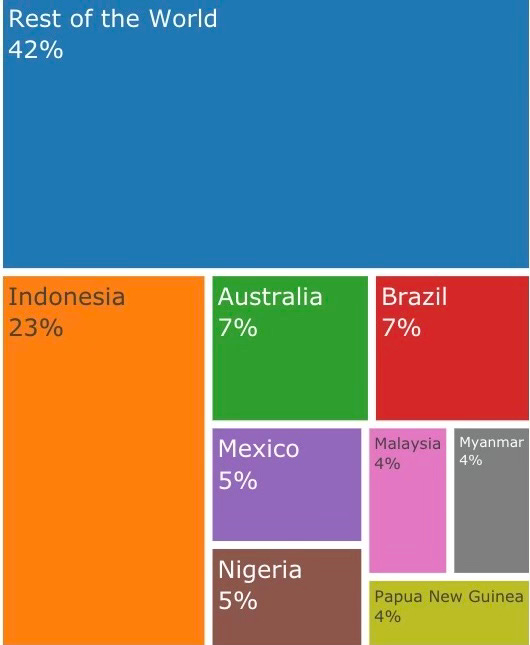Five reasons why Mangrove protection should be a priority
When I drew as a kid, I wanted to use all the colors available on the palette. My scenery contained mountains at the backdrop with a small yellow circle representing the sun at the top. A river originates from the bottom of the mountains and there is a grassland on either side of the stream. On this grassland, cattles graze and children play. Waves hit the rocks of different sizes. Now I know a similar scenery exists in the real world.1 The area where water meets land is called a ‘wetland’. Wetlands are special. They are one of the most biodiverse areas on the planet. They are beautiful. They store more carbon than most other ecosystems. Wetland conservation, therefore, holds the key to saving our planet.
Picture this. A river meandering at a bend, accompanied by the mollifying sound of flowing water. The coast flanked by shrubs with protruding roots into the water. Shades of green and blue. Not blended together like a turquoise. Separate and together in their full strength.
These shrubs and protruding roots on the coast of tropical and subtropical areas are a particular kind of wetlands-Mangroves. They are differentiated into 80 species2 and the largest percentage of them are found in Southeast Asia, with Indonesia accounting for 23% of the forest cover.3

The forests are being rapidly cleared for aquaculture, rice and palm oil production4. Mangroves, once dismissed as wild swamps, are essential for the following reasons:
Biodiversity: Mangroves are some of the most productive ecosystems on planet. Several kinds of algae, fishes, crabs and birds call mangroves their home. The Mangrove Action Project has identified list of species that are vulnerable to extinction.
Carbon Storage: While so much is spoken about the Amazon rainforest’s carbon storage capabilities, Mangroves store four times as much carbon as tropical forests.5
Coastal Defense: Mangroves prevent erosion, hold the sediments together, reduce storm damage and offer protection against sea level rise. WWF in collaboration with IUCN, Wetlands International and Both ENDS initiated the Green Coast project following the 2004 tsunami. The project involved restoring mangroves and protecting fishing grounds.6
Support local communities: Local communities rely on mangrove forest resources such as timber, firewood and fish for their livelihood. In the south Pacific Islands in Fiji, communities depend on mangrove ecosystems for food and income.7
Ecotourism: Forests are often cut for economic reasons. Ecotourism can provide similar, if not more, economic benefits while preserving nature. Swamini, a self help group based in Maharashtra, India organizes ‘mangrove safari’ for tourists in the Sindhudurg region.8
While I hope I was able to convert you to a mangrove champion, I don’t think we need reasons to preserve nature in its unadulterated form- the way it is most delightful.
Excuse the artistic license of the kid.




